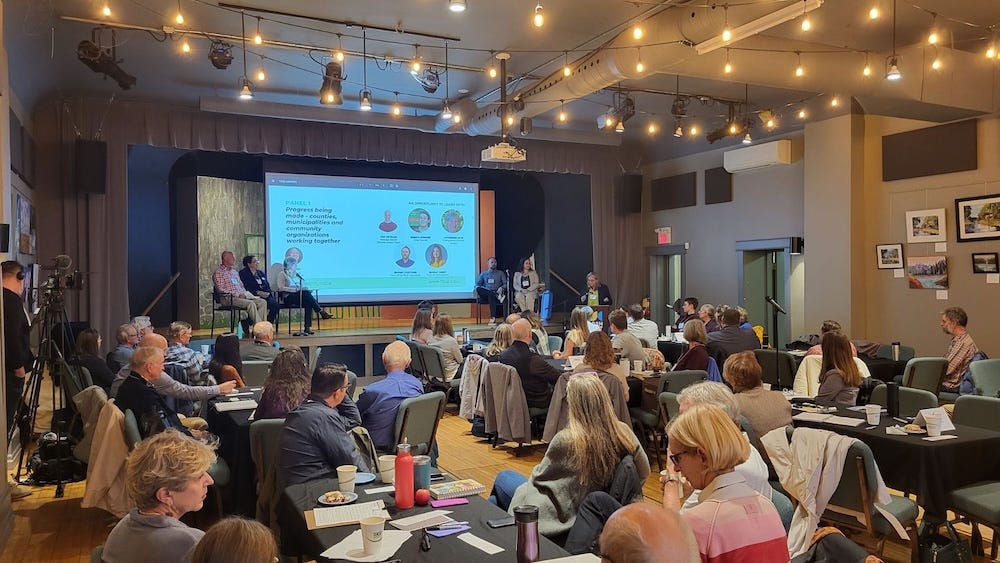New Case Study Tracks a Grassroots Approach to Affordable Housing in Southern Georgian Bay
Fifty residents, leaders, and experts have been working together since 2021 to tackle the housing crisis with social finance tools. A new Case Study shows what they’ve learned.

Over the past four years, a quiet but persistent project has been reshaping how Southern Georgian Bay and nearby counties talk about affordable housing.
The Social Finance & Affordable Housing Group, hosted by the Institute of Southern Georgian Bay, has been meeting monthly since 2021. What started as a learning circle during the pandemic has grown into a cross-county network of more than 50 residents, municipal leaders, nonprofit staff, and finance professionals.
Now, that journey is laid out in a new Case Study and Addendum, documenting what worked, what didn’t, and what still needs doing.
From Learning To Building
The group’s work unfolded in five phases:
Phase 1: Building basic knowledge of social finance and community wealth.
Phase 2: Naming the local housing crisis and gathering data.
Phase 3: Strategy sessions with experts and municipalities.
Phase 4: Launching a “whole community” approach to affordable housing.
Phase 5 (now): Moving toward building projects and creating the financial tools to support them.
Along the way, they:
published a Social Finance Primer for Communities,
built and regularly updated an Affordable Housing Toolkit,
ran public housing forums across Grey, Bruce, and Simcoe counties,
partnered with the Rotman School of Management on pro forma modelling for local sites,
and tested tools like community bonds, land trusts, and social purpose REITs.
The Case Study argues that no one sector — not government, not private developers, not philanthropy — can solve the housing crisis alone. The model is collaborative, incremental, and designed for the long haul.
A Regional Perspective
The work has influenced local housing policy across multiple municipalities, including Collingwood, Owen Sound, Meaford, Grey Highlands, and The Blue Mountains. Grey County has already adopted the group’s affordability matrix concept, linking housing costs to local incomes.
The addendum provides additional details, including who contributed, which events shaped the process, and how outside voices — from Ottawa’s Community Land Trust to Haliburton’s Places for People — have influenced the region’s approach.
The three big levers the group highlights for local action are:
Focused municipal and county housing knowledge — stronger planning and development practices.
Access to capital — mobilizing community wealth for housing acquisition and builds.
Support for non-market housing — ensuring housing held in community ownership, in perpetuity, rather than lost to speculative investment.
Why It Matters
Southern Georgian Bay has been hit hard by rising housing costs and limited supply. The Case Study makes the point plainly: affordable housing won’t be solved by one-off projects or by waiting for senior government programs.
Instead, it advocates for a systems change approach — where municipalities, citizens, and investors establish the necessary structures (financial, legal, social) that make affordability possible at scale.
The documents are less a celebration of what’s been achieved than a roadmap for what’s next. As one participant put it during a housing forum: “Meeting our housing needs is necessary to sustain our towns — and it will take the cooperation of a broad community.”
Both the Case Study and the Addendum are available now through the Institute of Southern Georgian Bay.


